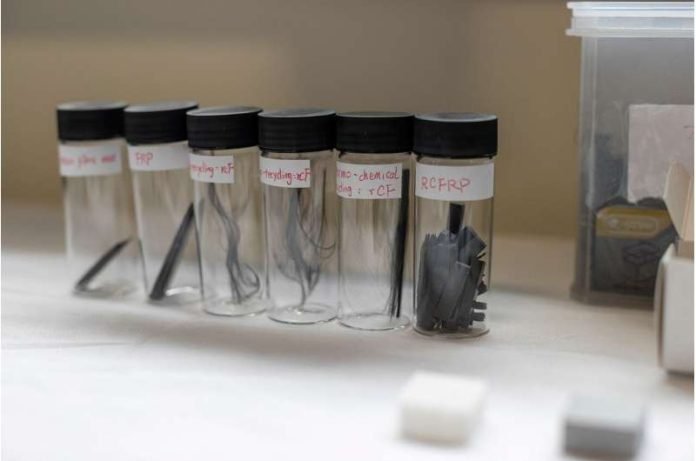
Researchers at the University of Sydney have developed an innovative recycling method to address the growing problem of carbon and glass fiber composite waste.
These materials, commonly used in industries such as automotive, aerospace, and renewable energy, are expected to become a significant source of waste by 2030.
Without suitable recycling methods, this waste could accumulate to an alarming extent, reaching 840,300 metric tons annually by 2050.
Currently, most carbon and glass fiber composites (CFRP) end up in landfills or are incinerated, resulting in environmental consequences.
The production of new composites further exacerbates the issue, depleting resources and requiring high energy input.
However, the University of Sydney research team has identified recycling methods that could reduce energy consumption by up to 70% and prevent valuable materials from going to waste.
Dr. Hadigheh, from the School of Civil Engineering, emphasized that carbon fiber composites are highly durable, weather-resistant, and versatile materials. Their usage is projected to increase by at least 60% in the next decade.
However, this growth also means a significant rise in waste, with an estimated 500,000 tons of carbon and glass fiber composite waste expected from the renewable energy sector alone by 2030.
To tackle this challenge, Dr. Hadigheh and Dr. Yaning Wei, a recent Ph.D. graduate, have developed a novel recycling method for carbon and glass fiber composites.
Their approach, outlined in the journal Composites Part B: Engineering, involves a pre-treatment process that enhances material breakdown at lower temperatures while preserving the mechanical properties of the fibers.
The recycled fibers obtained from this method retained up to 90% of their original strength, surpassing those recovered through thermal degradation alone.
The researchers successfully demonstrated the real-world applicability of their method by recycling parts of a bicycle frame and airplane scraps made of CFRP composites.
These experiments not only validated the effectiveness of the chemical pre-treatment but also highlighted the improved mechanical characteristics of the recycled carbon fibers.
In a previous study, the team evaluated different treatment systems for carbon and glass fiber composite waste, considering economic efficiency, environmental impact, waste type, and geographical location.
They found that solvolysis, catalytic pyrolysis, and pyrolysis combined with oxidation were economically viable methods for reclaiming carbon fiber. Solvolysis and electrochemical methods were also shown to significantly reduce CO2 emissions compared to landfilling and incineration.
The researchers emphasize that manufacturers should move beyond producing new materials and instead focus on developing recycled products from end-of-life streams.
They believe this presents a tremendous opportunity, not only due to the cost-effectiveness and minimal environmental impact of recycling methods but also because locally produced recycled products can provide immediate alternatives and contribute to the growth of an advanced manufacturing industry.
With supply chain disruptions becoming more prevalent, it is crucial for Australia to prioritize widespread recycling of new-generation construction materials before they become another overwhelming waste problem.
Dr. Hadigheh’s team is also working on methods for recycling composite materials and has recently patented a machine that precisely aligns recycled carbon fibers for repurposing.
By adopting these recycling methods, we can effectively address the mounting waste issue associated with carbon and glass fiber composites while simultaneously reducing environmental impact and creating a sustainable manufacturing industry for the future.
The study was published in Composites Part B: Engineering.
Follow us on Twitter for more articles about this topic.



